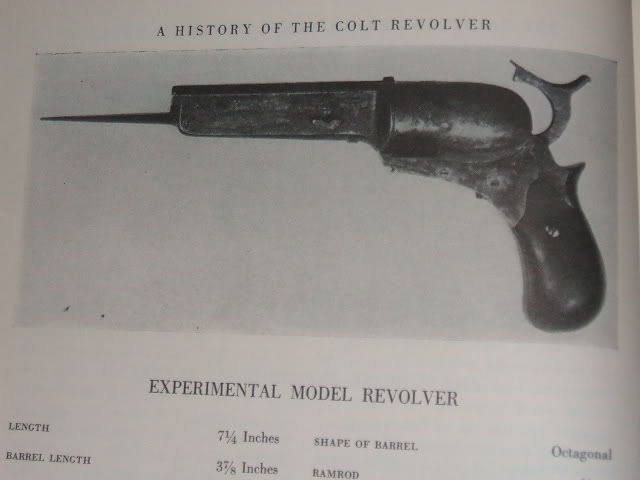Thanks for that second photo Model P.
Like you said in the first Colt cylinder shields photo, since the shield completely covered the front of the cylinder, that would make reloading a chore to have to remove the cylinder each time to reload. The second photo shows the same thing. Also obviously I am sure Colt thought about leaving the bottom cylinder open for reloading just like I did on my wooden mockup. If it had worked I'm sure Colt would have kept it. It must not have worked or Colt would have. I suspect Colt's experiments showed him the same things I was afraid of. That on first thought the shield would preclude cylinder front chainfire, but after he experimented he must have found out that the flame still would get through to the other cylinders, and perhaps the flame even be more directed behind the plate sideways into another cylinder front. The only question I have is since they didn't have non metallic heat & explosion resistant materials sufficient to make a shield out of, that could destroy itself in the event it failed so the cylinder wouldn't blow up, and the photos don't show any kind of heat resistant material backing that could be greased on the back of the shields, this makes me wonder if using modern materials if the idea might be able to work nowdays. But I recognize that even using modern materials (Colt didn't have) that the idea still may not work. Just an academic exercise in theory.
The problem ultimately is sealing the barrel to cylinder gap. The Russian Nagant revolver did this very effectively. As the Nagant's cylinder came into alignment with the barrel, the cylinder was forced forward and telescoped over the barrel's forcing cone. The cartridge's projectile was seated below the mouth of the case so that the case itself was force wedged into the forcing cone when the brass case expanded upon firing, creating an effective gas seal which precluded any cylinder to barrel gap flash.
Of course the Nagant came out decades after percussion revolvers became obsolete. But I wonder if the same basic principles of the Nagant could be used in a percussion revolver. Instead of a cartridge case head being wedged into the forcing cone, a projection could be made onto the front of the cylinder that was like that case head. So that when the cylinder came into alignment with the barrel, the cylinder was shoved forward (just like the Nagant) and that projection wedged into the forcing cone. Which could help prevent cylinder front chainfires. Maybe not as well as the brass cases expanding because there would be no malleable brass case expanding in this instance, but better than the normal barrel to cylinder gap. Just a thought. I wonder if any experimenters during the percussion era experimented with that. Do you have any knowledge if anyone did Model P?


